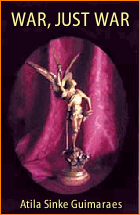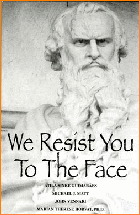Theology of History
 |
 |
 |
 |
 |
 |
 |
The Judgment of Nations - IX
Ven. Holzhauser: The Destiny of England
in the Reign of Mary
"After desolation has reached its peak in England, peace will be restored and England will return to the Catholic Faith with greater fervor than ever before."
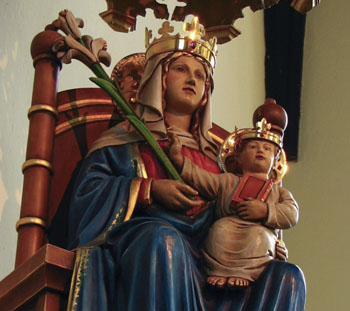 This is the famous prophecy of the German Ven. Bartholomew Holzhauser (1613-1658) about England, the country he loved and longed to evangelize. He never would do so, as he died young. But his thoughts and words returned often to her longed-for conversion.
This is the famous prophecy of the German Ven. Bartholomew Holzhauser (1613-1658) about England, the country he loved and longed to evangelize. He never would do so, as he died young. But his thoughts and words returned often to her longed-for conversion.
In a series of visions collected into a manuscript in 1646, he wrote that he saw that England would fall into extreme misery, that a King would be slain, but afterwards the Kingdom of England would return to the Roman Catholic Faith, and the English people would achieve more for the Church than during their first conversion to Christianity.
‘If the King refuses, he will be smitten’
In the Fourth Vision in that manuscript, Ven. Holzhauser speaks of the apostate British Isles. He describes the scene: As he stood by the Danube in 1635, offering prayers for the whole earth, his gaze turned to Britain:
“My heart poured itself out in many lamentations before God, saying, ‘How long will the adversary hold in bondage this Kingdom, which swims with the blood of martyrs, spilled by that accursed woman Jezebel [Queen Elizabeth I], as she wished to reign in the Church of God?’ And I heard at the same time that the lawful sacrifice would be intermitted for 120 years.“
He saw the multitudes of people thronged together, the land inwardly shaken by armies, as if by an earthquake. The multitude became divided, and he beheld the King (Charles I) standing in the midst. He continued:
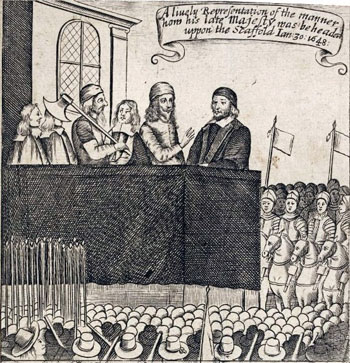
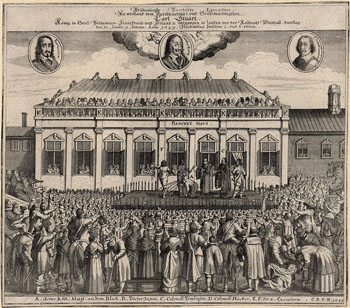 “And then it was told to me, ‘All rests with the King, and King was, as it were, sold.’
“And then it was told to me, ‘All rests with the King, and King was, as it were, sold.’
“And towards the west the Heavens were opened, and the land trembled as with an earthquake, and the nations were shaken, and terror came over the whole Kingdom; and it was told me: ‘On the King depended the salvation of the people!’
“And it seemed to me as if he refused; and I heard: ‘If the King refuses, then he will be smitten.’ And the Heavens again opened towards the West; and a large fiery ball came down, flew obliquely, and smote the King.” (1)
He was speaking of the Stuart King Charles I of England and Scotland. The King was staunchly Anglican, anti-Puritan and somewhat open to the Catholics (his French wife Henrietta Maria was Roman Catholic. Instead of embracing the Catholic Faith, he raised anger and division on all sides with secret agreements and concessions, which resulted in the English Civil War (1642-1651) between the Puritan Parliamentarians and the King’s Royalists.
After a long row of defeats of the King’s forces, Charles I in disguise fled to Scotland in 1647. But the Scots, reneging on an earlier agreement with the King, came to new terms with the victorious English Parliament and handed over Charles I to its commissioners.
This was the beginning of the end for Charles I, who would soon be put on trial for treason as “the grand author of our troubles” and cause of bloodshed. On January 20, 1649, he was charged with high treason before a specially constituted high court in Westminster Hall and found guilty.
On January 30, 1649, the Stuart King was publicly beheaded on a scaffold outside the banqueting House on Whitehall, declaring himself a staunch Anglican to the end.
This important prophecy of Ven. Holzhauser was thus fulfilled in his lifetime. The King, making appeasements and concessions to multiple parties, divided the people and could not find solid support in any quarter. He refused to take the side of the Catholics; in short, he refused Heaven's inviation.
In the end, he was “sold” by the Scots, and suffered execution at the block. Shortly afterwards, the Mass was forbidden by the Penal Law to be said in the Kingdom and were only repealed more than a century later with the Catholic Relief Act of 1791.
The fulfillment of this prophecy gives credence to his others regarding England, particularly the famous prediction regarding a future return of the country back to the Catholic Faith.
The rest of the vision
After this time of turmoil, Ven. Holzhauser saw a time in the future of peace for England, with the whole land illuminated: “And lo! I saw a ship sailing on the sea, and arrive in port, and righteous and holy men, who were in the ship, landed and they began to preach the Gospel in those countries. They prospered in their undertaking; and that land returned to peace and the sanctification.” (2)
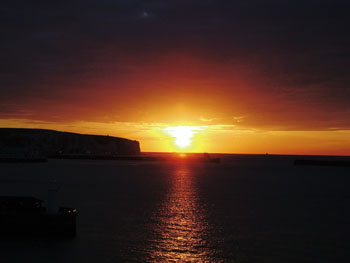 His German biographer noted that, after this vision, Holzhauser’s thoughts were continuously turned toward the conversion of England: “No resolution was so fixedly implanted in him as to go to England and there, utterly regardless of any risk he might run for his life, make a beginning towards a restoration of the Catholic Faith. He awaited only the Elector’s permission to prosecute this voyage.” (3)
His German biographer noted that, after this vision, Holzhauser’s thoughts were continuously turned toward the conversion of England: “No resolution was so fixedly implanted in him as to go to England and there, utterly regardless of any risk he might run for his life, make a beginning towards a restoration of the Catholic Faith. He awaited only the Elector’s permission to prosecute this voyage.” (3)
He never received that permission. Induced by close friends to delay his missionary effort to the Isle until after this priestly Institute was more firmly consolidated, he dedicated himself to its needs. It was growing and prospering when he died in Bingen on May 20, 1658, at age 44.
As we have seen, Ven. Holzhauser predicted for the Church a long period of peace and triumph which is to precede the Antichrist and the Last Times. In these Latter Times, the Revolution would be smashed by a great Monarch-Leader and the unity of the Faith achieved under a Holy Pope.
This would be the time, then, of England’s happy conversion. In the time of peace, she would once again be illuminated by the Faith and win by her deeds great glory for God, greater even than in times past.
Other prophecies of England
Anna Maria Taigi also predicted a time of peace after the three Days of Darkness of the Great Chastisement, as described in another article. In these happy days, she predicted, Religion shall extend its empire through the world under “one Shepherd.” England will be converted, as well as Russia and China, and all the faithful will be filled with joy at this overwhelming triumph of the Church. (4)
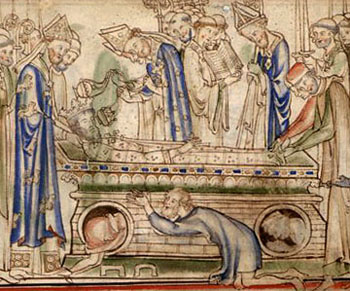 As far back as the 11th century there have been predictions of a great fall and a greater return to the Faith for England. On his deathbed, the 11th century Saxon King St. Edward the Confessor
was visited in a vision by two holy monks of Normandy whom had known in his youth. They denounced the grievous corruptions of the Church and the State, and warned him that God had laid a curse upon the Realm.
As far back as the 11th century there have been predictions of a great fall and a greater return to the Faith for England. On his deathbed, the 11th century Saxon King St. Edward the Confessor
was visited in a vision by two holy monks of Normandy whom had known in his youth. They denounced the grievous corruptions of the Church and the State, and warned him that God had laid a curse upon the Realm.
The King begged in vain for this sentence to be averted, and finally asked how long the curse should last. They answered with these mysterious words: “In that day when a green tree shall be cut away from the midst of its trunk, when it shall be carried away for the space of three furlongs from its root, when without the help of man it shall join itself again to its trunk and shall again put forth leaves and bear fruit in its season then first shall be the time when the woes of England shall come to an end.”
The severance of the green tree from its trunk signifies the separation of the English Church from the root of the Catholic Church, the Roman See. This tree was to be separated from its life-giving root the distance of “three furlongs.”
These three furlongs could well signify the three centuries before England would again be reunited to the Catholic Church, which can be interpreted as the reestablishment of the Catholic Hierarchy in England by Pope Pius IX in 1850.
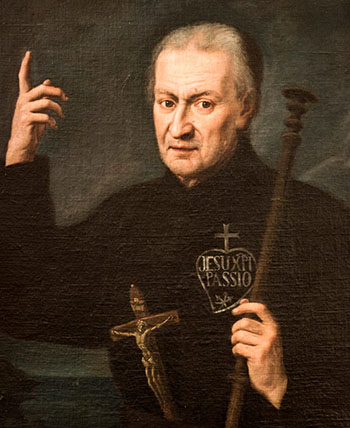 The British Kingdom has yet to reach the season where its woes come to an end with the Protestant sect wiped out. The flowers of virtue and fruits of sanctity it will bring forth seem reserved to the future, perhaps even near future of peace and unity that will fall upon the world in a marvelous way after the Great Chastisement. This period is what St. Louis de Montfort calls the Reign of Mary.
The British Kingdom has yet to reach the season where its woes come to an end with the Protestant sect wiped out. The flowers of virtue and fruits of sanctity it will bring forth seem reserved to the future, perhaps even near future of peace and unity that will fall upon the world in a marvelous way after the Great Chastisement. This period is what St. Louis de Montfort calls the Reign of Mary.
The Cure of Ars also spoke once about England in a prophetic tone. On May 14, 1854, Bishop Ullathorne called on Fr. John Vianney and asked him to pray for England. The Bishop of Birmingham relates that the man of God said with an accent of extraordinary conviction: "Monseigneur, I believe that the Church in England will be restored to its splendor."
This was also predicted by St. Dominic Savio, who related his vision of the conversion of England to Dom Bosco and exhorted him to tell the Pope what he had seen and heard. Dom Bosco did as he asked, as you can read here.
Although there are many others, I will end this article with St. Paul of the Cross, who famously devoted himself to 50 years of prayer for the return of “Mary’s Dower.”
The founder of the Passionist Order told his spiritual sons: “ England is always before my eyes, and if ever again it becomes Catholic, the benefit to the Church will be immeasurable.” (5)

Our Lady of Walsingham, a special patroness of England
In a series of visions collected into a manuscript in 1646, he wrote that he saw that England would fall into extreme misery, that a King would be slain, but afterwards the Kingdom of England would return to the Roman Catholic Faith, and the English people would achieve more for the Church than during their first conversion to Christianity.
‘If the King refuses, he will be smitten’
In the Fourth Vision in that manuscript, Ven. Holzhauser speaks of the apostate British Isles. He describes the scene: As he stood by the Danube in 1635, offering prayers for the whole earth, his gaze turned to Britain:
“My heart poured itself out in many lamentations before God, saying, ‘How long will the adversary hold in bondage this Kingdom, which swims with the blood of martyrs, spilled by that accursed woman Jezebel [Queen Elizabeth I], as she wished to reign in the Church of God?’ And I heard at the same time that the lawful sacrifice would be intermitted for 120 years.“
He saw the multitudes of people thronged together, the land inwardly shaken by armies, as if by an earthquake. The multitude became divided, and he beheld the King (Charles I) standing in the midst. He continued:

Charles I gives his farewell address
before execution, below.

“And towards the west the Heavens were opened, and the land trembled as with an earthquake, and the nations were shaken, and terror came over the whole Kingdom; and it was told me: ‘On the King depended the salvation of the people!’
“And it seemed to me as if he refused; and I heard: ‘If the King refuses, then he will be smitten.’ And the Heavens again opened towards the West; and a large fiery ball came down, flew obliquely, and smote the King.” (1)
He was speaking of the Stuart King Charles I of England and Scotland. The King was staunchly Anglican, anti-Puritan and somewhat open to the Catholics (his French wife Henrietta Maria was Roman Catholic. Instead of embracing the Catholic Faith, he raised anger and division on all sides with secret agreements and concessions, which resulted in the English Civil War (1642-1651) between the Puritan Parliamentarians and the King’s Royalists.
After a long row of defeats of the King’s forces, Charles I in disguise fled to Scotland in 1647. But the Scots, reneging on an earlier agreement with the King, came to new terms with the victorious English Parliament and handed over Charles I to its commissioners.
This was the beginning of the end for Charles I, who would soon be put on trial for treason as “the grand author of our troubles” and cause of bloodshed. On January 20, 1649, he was charged with high treason before a specially constituted high court in Westminster Hall and found guilty.
On January 30, 1649, the Stuart King was publicly beheaded on a scaffold outside the banqueting House on Whitehall, declaring himself a staunch Anglican to the end.
This important prophecy of Ven. Holzhauser was thus fulfilled in his lifetime. The King, making appeasements and concessions to multiple parties, divided the people and could not find solid support in any quarter. He refused to take the side of the Catholics; in short, he refused Heaven's inviation.
In the end, he was “sold” by the Scots, and suffered execution at the block. Shortly afterwards, the Mass was forbidden by the Penal Law to be said in the Kingdom and were only repealed more than a century later with the Catholic Relief Act of 1791.
The fulfillment of this prophecy gives credence to his others regarding England, particularly the famous prediction regarding a future return of the country back to the Catholic Faith.
The rest of the vision
After this time of turmoil, Ven. Holzhauser saw a time in the future of peace for England, with the whole land illuminated: “And lo! I saw a ship sailing on the sea, and arrive in port, and righteous and holy men, who were in the ship, landed and they began to preach the Gospel in those countries. They prospered in their undertaking; and that land returned to peace and the sanctification.” (2)

The sun of Faith will rise again
on the English side of the Dover
He never received that permission. Induced by close friends to delay his missionary effort to the Isle until after this priestly Institute was more firmly consolidated, he dedicated himself to its needs. It was growing and prospering when he died in Bingen on May 20, 1658, at age 44.
As we have seen, Ven. Holzhauser predicted for the Church a long period of peace and triumph which is to precede the Antichrist and the Last Times. In these Latter Times, the Revolution would be smashed by a great Monarch-Leader and the unity of the Faith achieved under a Holy Pope.
This would be the time, then, of England’s happy conversion. In the time of peace, she would once again be illuminated by the Faith and win by her deeds great glory for God, greater even than in times past.
Other prophecies of England
Anna Maria Taigi also predicted a time of peace after the three Days of Darkness of the Great Chastisement, as described in another article. In these happy days, she predicted, Religion shall extend its empire through the world under “one Shepherd.” England will be converted, as well as Russia and China, and all the faithful will be filled with joy at this overwhelming triumph of the Church. (4)

On his deathbed, Edward the Confessor saw the fall of England & a triumph in the faraway future
The King begged in vain for this sentence to be averted, and finally asked how long the curse should last. They answered with these mysterious words: “In that day when a green tree shall be cut away from the midst of its trunk, when it shall be carried away for the space of three furlongs from its root, when without the help of man it shall join itself again to its trunk and shall again put forth leaves and bear fruit in its season then first shall be the time when the woes of England shall come to an end.”
The severance of the green tree from its trunk signifies the separation of the English Church from the root of the Catholic Church, the Roman See. This tree was to be separated from its life-giving root the distance of “three furlongs.”
These three furlongs could well signify the three centuries before England would again be reunited to the Catholic Church, which can be interpreted as the reestablishment of the Catholic Hierarchy in England by Pope Pius IX in 1850.

St. Paul of the Cross, the Passionist founder, prayed 50 years for England’s conversion
The Cure of Ars also spoke once about England in a prophetic tone. On May 14, 1854, Bishop Ullathorne called on Fr. John Vianney and asked him to pray for England. The Bishop of Birmingham relates that the man of God said with an accent of extraordinary conviction: "Monseigneur, I believe that the Church in England will be restored to its splendor."
This was also predicted by St. Dominic Savio, who related his vision of the conversion of England to Dom Bosco and exhorted him to tell the Pope what he had seen and heard. Dom Bosco did as he asked, as you can read here.
Although there are many others, I will end this article with St. Paul of the Cross, who famously devoted himself to 50 years of prayer for the return of “Mary’s Dower.”
The founder of the Passionist Order told his spiritual sons: “ England is always before my eyes, and if ever again it becomes Catholic, the benefit to the Church will be immeasurable.” (5)
- Joao Machado, Prophecies and Visions of Ven. Fr. Bartholomew Holzhauser, Kindle Edition, pp 40-41.
- Ibid., p. 42.
- Ibid., pp. 30-31.
- Herbert Thurston, SJ, The war & the prophets; notes on certain popular predictions current in this latter age, London: Burns & Gates, Ltd., 1915, p. 6.
- Excerpted from Christ Our Life, by Sisters of Notre Dame of Chardon, Ohio, see here.

Posted Novwmber 4, 2022




